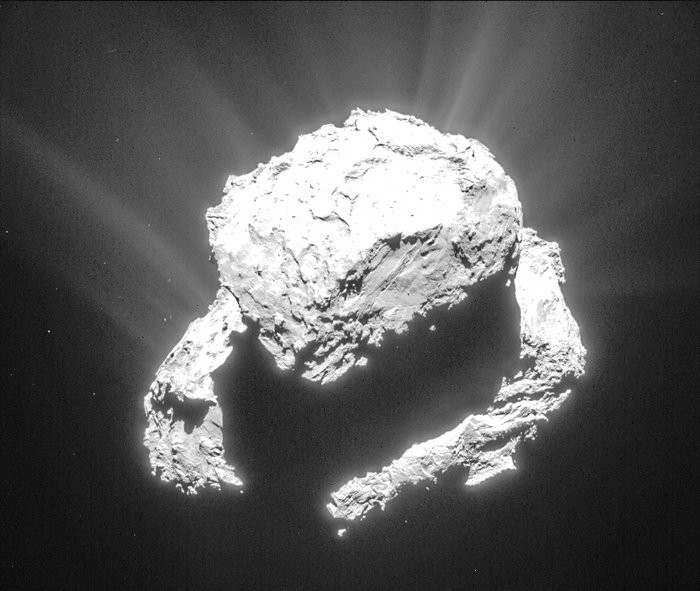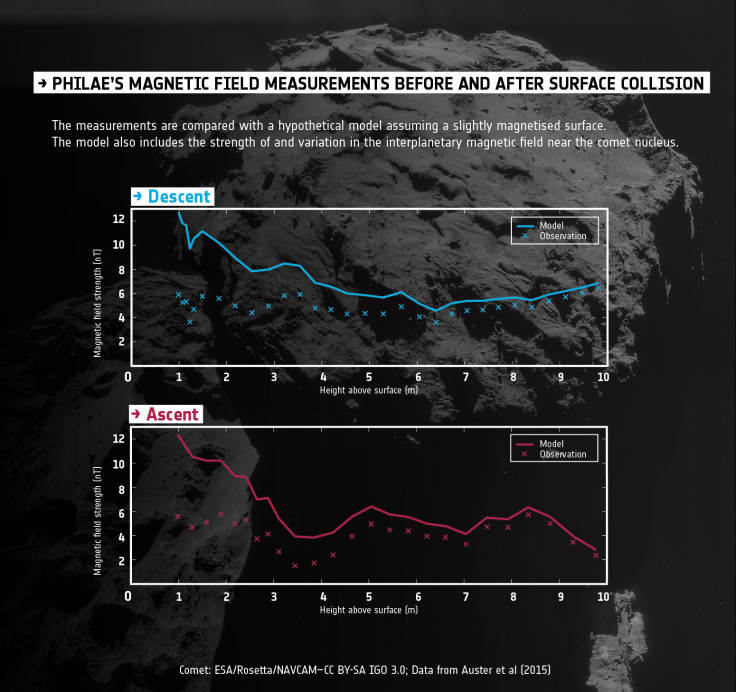Rosetta and Philae find no magnetic field for Comet 67P as experts await wake up

Comet 67P does not have a magnetic field, scientists working on the Rosetta mission have said, shedding light on comet formation and evolution.
Hans-Ulrich Auster, co-principal investigator on Romap, told IBTimes UK that they got very clear results regarding the comet's magnetism: "We measured at four points, which had not been expected before. We found no magnetic field at fantastic resolution, because we had the orbiter and Philae so we know even the very small variation we saw were not caused by the comet, so they are really external fields."
Romap instruments on board the Rosetta orbiter and the Philae lander were looking to find any magnetic field present billions of years ago when Earth and other planets were forming. Previous research attempting to detect magnetisation around comets has been difficult because reliable estimates were hampered by complications such as comet-solar wind interactions.
Some theories suggest star and planet formation need a magnetic field to accelerate the growth of the Solar System – a question the research team hoped to answer with Romap.
Measurements were taken during and after Philae's descent, during touchdowns as the lander bounced on the comet surface.
The findings, published in the journal Science, showed there is no magnetic field, suggesting these forces do not play a dominant role in "the accumulation of planetary building blocks" – a find they believe is representative of all comets.

"We assume this comet is representative because we only have this comet," Auster said. "It might be that it is completely different on other side of comet, or it could be that this comet is different to all other comet, but it's not very likely."
He was speaking ahead of the annual European Geosciences Union General Assembly, where the latest science results from the Rosetta mission will be announced.
Scientists are hoping the Philae lander will wake up from hibernation as it edges closer to the sun – it landed in the shadow of a cliff meaning it could not utilise its solar panels for energy.
"We really hope the lander wakes up," Auster added. "I'm very optimistic because we are coming closer to the sun. There's a switch that activates the lander if the temperature increases to minus 45C ... Coming closer to the sun must help."
© Copyright IBTimes 2025. All rights reserved.






















